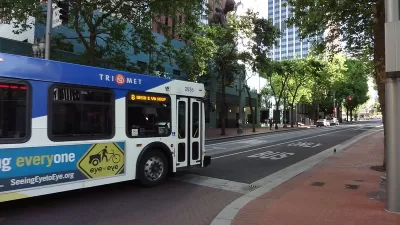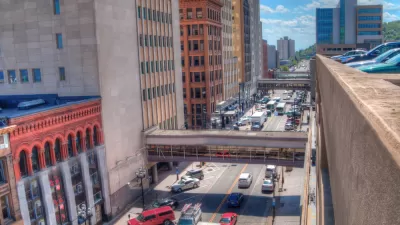The IndyGo board of directors scrapped a bus system redesign planned for launch in June 2020 as part of its Covid-19 emergency response. The transit agency is now seeking public feedback on a new map with similar changes.

IndyGo, the public transit service agency for the city of Indianapolis and the surrounding Marian County, is dusting off a bus system redesign plan it paused for the pandemic.
The “Central Indiana Transit Plan,” created in 2016, “outlined a 5-year vision that included three bus rapid transit routes, slightly fewer local bus routes that come more often over longer hours, and a map that resembles more of a grid system instead of the existing hub-and-spoke system that routes most buses through downtown,” according to an article by Kayla Dwyer for the IndyStar.
IndyGo made substantial progress on the plan, launching the Red Line in 2019, breaking ground on the Purple Line in 2022, and recently opening its first “Super Stop” last month. The transit agency has also seen costs on bus rapid transit (BRT) construction skyrocket and battled the state for funding in 2020, 2021, and 2022.
A new bus system based on a high-frequency grid, intended to go into effect in June 2020, was also scrapped during the pandemic, when the IndyGo board of directors “adopted an emergency plan in response to COVID-19 that delayed those changes indefinitely,” according to Dwyer.
To relaunch the system redesign, IndyGo has released an updated map, still promising “more efficient, faster service, at the expense of a few lower-ridership routes,” and is hosting a series of public meetings to gather feedback on the map.
“Currently, IndyGo's bus routes are split roughly into thirds in terms of 15-minute, 30-minute and 60-minute frequency. The proposed new map would have almost entirely 15- and 30-minute routes, apart from three 60-minute routes in southeast Indianapolis and 10-minute service on the Red, Purple and Blue Lines,” reports Dwyer.
More details about the changes to the system pam and the schedule for implementation are included in the source article below.
FULL STORY: IndyGo is proposing a new local bus route map. What to know and how to give input

Trump Administration Could Effectively End Housing Voucher Program
Federal officials are eyeing major cuts to the Section 8 program that helps millions of low-income households pay rent.

Planetizen Federal Action Tracker
A weekly monitor of how Trump’s orders and actions are impacting planners and planning in America.

Ken Jennings Launches Transit Web Series
The Jeopardy champ wants you to ride public transit.

Philadelphia Is Expanding its Network of Roundabouts
Roundabouts are widely shown to decrease traffic speed, reduce congestion, and improve efficiency.

Why Bike Lanes Are Good: An Explainer for the US Transportation Secretary
Sean Duffy says there’s no evidence that bike lanes have benefits. Streetsblog — and federal agencies’ own data — beg to differ.

California Invests Additional $5M in Electric School Buses
The state wants to electrify all of its school bus fleets by 2035.
Urban Design for Planners 1: Software Tools
This six-course series explores essential urban design concepts using open source software and equips planners with the tools they need to participate fully in the urban design process.
Planning for Universal Design
Learn the tools for implementing Universal Design in planning regulations.
Ada County Highway District
Clanton & Associates, Inc.
Jessamine County Fiscal Court
Institute for Housing and Urban Development Studies (IHS)
City of Grandview
Harvard GSD Executive Education
Toledo-Lucas County Plan Commissions
Salt Lake City
NYU Wagner Graduate School of Public Service





























